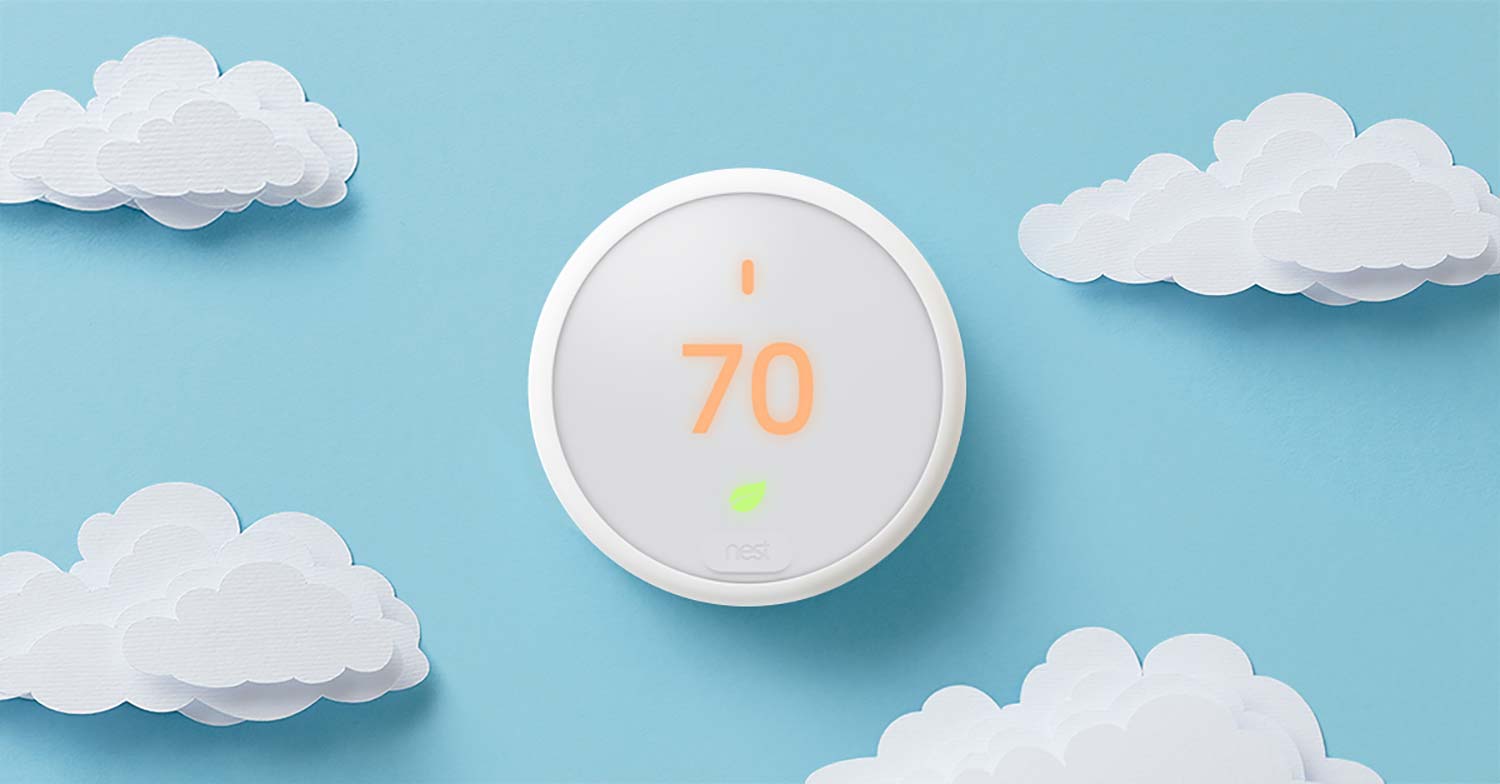Tom's Guide Verdict
The Nest Thermostat E is an attractive and relatively affordable smart thermostat, and it's also one of the easiest to use.
Pros
- +
Simple installation
- +
Compatible with multiple HVAC systems
- +
Google Home, Alexa compatible
- +
Multiple efficiencies
- +
Alerts and reports
Cons
- -
Doesn't work with Apple HomeKit
- -
Remote monitors lack occupancy sensor
Why you can trust Tom's Guide
The Nest Thermostat E ($149) has been running my home's heating and cooling systems for a couple weeks. And I don't want to part with it. Nest's familiar round puck mounts easily and connects to your HVAC wiring in minutes. Turning and pressing the Nest E to navigate and select menu options becomes second nature in no time, quickly making it a trusted and friendly interface.
There's a couple of minor flaws, but overall, the Thermostat E brings simplicity and capability to your home with an eye toward running your HVAC system for the greatest comfort at the least cost. It's one of the best smart thermostats for those looking for something less expensive than top-end devices.
Nest Thermostat E review: Price and release date
The Nest Thermostat E was released in August, 2017; in 2020, Google stopped selling the Nest Thermostat E directly to consumers, but you can still find it at online retailers for around $169.
Nest Thermostat E review: What we liked
Simple installation. Nest Thermostat E, like most smart thermostats, uses clearly marked connector ports to show where to connect the wires of your HVAC system. Power down your furnace, remove the old thermostat, put the red wire in the Nest's "R" port (and so on, until all wires are in their place) and power the furnace back up.
Attractive Design. Nest Thermostat E greets you with a welcome screen and easy-to-navigate setup instructions. The clear, simple typefaces in the Nest user interface, the frosted dial/screen and the tactile feel of rotating the Nest housing create an inviting user experience that carries beyond installation and into regular use.
Compatible with multiple HVAC systems. While the Nest E has fewer inputs than the full-fledged Nest Learning Thermostat, the Nest Thermostat E plays well with the vast majority of home HVAC systems out there; Nest claims it's compatible with 85 percent of 24-volt heating and cooling systems. Nest also provides a helpful tool that tells you if your system is compatible.
Google Home and Alexa compatible. You can use either Google Assistant or Alexa to change the Nest E's temperature setting. However, unlike Ecobee's thermostats, the Nest does not work with the Apple HomeKit.
Multiple heating and cooling options. Nest Thermostat E's strengths lie in its ability to make just about every aspect of home heating and cooling as efficient as can be. You can set up Nest to automatically use Eco temperature settings (lower temps for heating, higher temps for cooling) when you are not at home, which saves money. A green leaf appears in the app and on the thermostat to let you know when the system is working at greater efficiency.

Other tools include Nest Sense, an autoscheduling feature that learns as you make changes to your thermostat. And Early-On will start the heating or cooling early in order to get the house to the desired temperature at the desired time, as opposed to merely turning on at a particular time. Cool to Dry tackles indoor humidity by powering on the air conditioner you turn off this feature for maximum efficiency.
Airwave shuts off your air conditioner compressor — saving power — but keeps the fan on once the room has reached the desired temperature. When active, Airwave dutifully shut down our air conditioning compressor while leaving the fans on when our house cooled to 70 degrees. But after the house warmed up, it seemed to take too long for Nest to reactivate the air compressor so the fan would blow colder air. I've since switched off Airwave.
Alerts and reports. Nest Thermostat E alerts you when it is time to change the furnace filter and provides an emailed home report summarizing your home's energy use.
Nest Thermostat E review: What we didn't like
Limited remote sensors. Similar to the Ecobee3 Lite, the Nest E can be paired with remote sensors ($39, sold separately), so you can monitor the temperature in rooms other than the one in which the thermostat is installed. To keep you from heating or cooling a room that's unoccupied, Ecobee's remote sensors can also detect people (or the lack thereof).

Several setup options. While it's easy to set up, the multiple options for improving the efficiency of your heating and cooling system require you to plan how you want your home's HVAC system to run. So, while the Nest system is easy to use and offers a very friendly interface, it does take some time to work through all the ways it can be set up. This is not so much a negative feature as it is something to be aware of.
Nest Thermostat E review: Verdict
Nest Thermostat E's control over our home's HVAC system has been a very positive experience. While not all of its efficiency options worked well in my house, it's nice that Nest offers so many options. At $149, the Nest E is about $50 less than the Nest Learning Thermostat, which has a stainless-steel dial and works with 10 percent more systems than the E (95 percent versus 85 percent, according to Nest).
In this price range though, we slightly prefer the Ecobee3 Lite ($169), especially if you have rooms far from the thermostat that get overly hot or cold; Ecobee's remote sensors have more functionality than Nest's. Still, you can't go wrong with the Nest E; I've enjoyed just sitting back, relaxing and letting it do all the work.
Credit: Nest
-
soccerbeachdude Has anyone tried the original Nest Thermostat 3rd gen (2nd floor living areas) as the primary one and then two Nest E Thermostats for less important floors (e.g., 1st and 3rd floors)? I wonder if this is a good way to minimize costs on thermostats when prices drop on these. Or, has anyone tried the Nest 3 as primary and two separate EcoBees? Do they pair up well or is it best to stick with just one brand? Happy to hear your thoughts on these before I buy these. Thank you.Reply -
aribloch2 Use one system so you have one app. The nest thermostat goes on sale regularly, I got a 3rd gen from Costco for $170 in December, msrp $250.Reply -
aribloch2 Currently it looks like an even better deal on Costco. $170 for a thermostat and home mini. You can only buy 2 per customer thoughReply -
aribloch2 I would recommend using one brand so you can control all from one app. Buy them on black friday or on good sale. Got nest 3 for $170 from Costco in December, msrp $250. At that price, the thermostat e makes no senseReply

